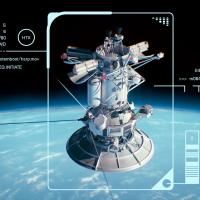Space debris is all around us, orbiting Earth at speeds up to 17,500 miles per hour — approximately 10 times the speed of a bullet. As the number of exploratory missions and our dependence on satellites has increased over time, so too has the risk of collisions with rogue debris.
Previous accidents have resulted in the scattering of thousands of additional pieces of space pollution — many of which are too small to trace. With so much junk now flooding Earth’s orbital sphere, scientists warn that if we don’t do something soon, some parts of it could no longer be usable.
What is Space Debris?
Space debris is a defunct object in space that was made by humans. Examples large enough to be traced include decommissioned satellites, abandoned spacecraft, and fragments from the break-up of rocket bodies.
NASA estimates that more than 500,000 waste objects larger than a marble are currently in orbit. But there is also a great deal of debris caused by collisions and explosions that are less than 10 centimeters in size.
So, how much space debris is there in total? We can’t know exactly, but the U.S. Space Surveillance Network estimated that more than 128 million pieces of debris (smaller than one centimeter) orbited Earth in January of 2019. Even a paint chip can inflict serious damage when traveling at 17,500 miles per hour — endangering the lives of astronauts and the safe orbit of functional space objects.
More than 500 collisions, break-ups, and explosions have already occurred in space since the first artificial satellite was launched in 1957. One of the most well-known was the Iridium 33 collision with a defunct Russian satellite in 2009. And the risk of future collisions is only growing.
Space Debris Solutions
In the U.S. specifically, space debris is tracked by the Space Surveillance Network which is operated by the Air Force. The SSN has optical and radar sensors at different sites around the world that can determine the location of debris larger than a softball.
The Air Force’s Joint Space Operations Center keeps an ongoing record of space debris in orbit and shares that information with other countries. Somewhat similar to air traffic control, JSpOC notifies operators of potential oncoming collisions.
Meanwhile, the Federal Communications Commission is responsible for implementing regulatory measures for space debris. Last year, the FCC voted to require additional safety disclosures from satellite operators, such as quantifying the risk of collisions and the probability of success in disposing the spacecraft.
Working together, these institutions are helping protect billions of dollars worth of equipment in space, most notably, the International Space Station. The ISS has already had to change its course on several occasions to avoid space debris, which is one — albeit short-term — solution to the problem. More sustainable solutions include the use of lasers, nets, harpoons, and remotely controlled vehicles to remove space junk from orbit altogether.
The proposed laser approach involves ground-based laser “brooms” that would vaporize and destroy space debris. This would be accomplished through a process known as ablation in which debris would be swept out of collision paths by heating one side of the object long enough to alter its orbit. As the application of heat continues, the debris hits Earth’s atmosphere where it burns up.
The use of harpoons, which would require a mission to space, has shown promise in recent tests. Airbus engineers in the U.K. developed a pen-sized, titanium rod that was successfully fired from a spacecraft and attached to its target as part of the RemoveDEBRIS project. Once attached to a piece of debris, the hope is that the device and its target would deorbit and, together, burn up in the atmosphere.
Similarly, the Japanese Aerospace Exploration Agency launched a “space net” to test its ability to collect and destroy debris. The idea was that the net, made of aluminum and steel, would attract debris like a magnet before pulling it down to Earth’s atmosphere, but the tech was faulty in a failed 2017 experiment. Despite the unsuccessful outcome, other organizations such as the European Space Agency are still working to develop netting technologies.
But scientists have become especially excited about the prospect of remotely controlled vehicles being deployed to collect larger pieces of space trash. An upcoming mission, known as ClearSpace-1, is leading the charge.
The Mission to Clean Up Space
With space quickly becoming humanity’s biggest junkyard, a group of engineers is turning to the use of remotely controlled vehicles for mitigation. ClearSpace-1 will attempt to remove a larger piece of space debris that could cause collisions, creating even more untraceable debris.
“Most of the small pieces of debris are actually resulting from fragmentation events of large pieces of debris,” Luc Piguet, CEO and co-founder of ClearSpace explains. “This means that if you remove one large piece of debris, you remove thousands of potential future pieces of debris.”
The mission’s focus is to capture and remove a secondary payload adapter, known as Vespa, which was left in orbit by the Vega rocket in 2013. Through a partnership with the European Space Agency, they hope to achieve this goal by 2025, but it’s not as easy as it sounds.
“The trickiest part — which will be the capture — will be done autonomously,” says Muriel Richard-Noca, who founded ClearSpace with Piguet. “The objects you’re trying to capture (are) tumbling… so you need to recognize what the tumbling is, such that you decide to do a maneuver to match your motion with the velocity of the object.”
Once the robotic spacecraft aligns with its target, it’ll use claw-like arms to capture the Vespa and carry it down to Earth’s atmosphere. This single mission will cost over $100 million. While the maneuver will be a huge step forward in space debris removal, the ClearSpace team believes it’s only the beginning.
“Until we have actually proven that it’s feasible to capture an object that is not cooperative in space, there will remain doubt,” Richard-Noca says. “And so, really, what we’re pushing here is the boundary.”
In many ways, we’re still at the beginning of our exploration of space. And with the potential for space tourism and even colonization on the horizon, our ambitions hinge on our ability to clear the way first.
“The clock is ticking,” Piguet says. “The question is, what kind of contribution we can give to the world, to the people around us, and to the future generations.”
For more interesting news about the people and ideas that are changing our world, subscribe to Freethink.


